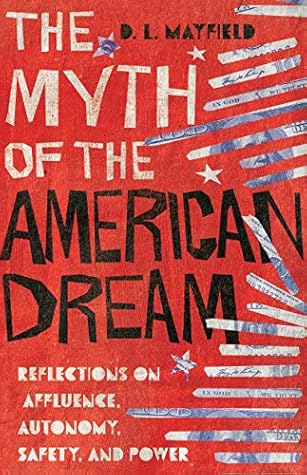More on this book
Community
Kindle Notes & Highlights
Read between
May 28 - July 7, 2020
contributed to the erasure of Larnell Bruce Jr.’s name and life and death. It is cheerful, beautiful, and glosses over the truth of my neighborhood.
have a different task: to seek and find the other histories. To seek and celebrate the stories we were taught to ignore, erase, or dismiss.
acknowledging that how we see ourselves in the world is not always correct.
The great sin of our age is that we Americans have not returned to our hallowed, God-ordained roots. In the textbooks I read, in the homeschool groups I was a part of, in the radio programs we listened to, and the historical novels we read, I absorbed a persistent imperative to do my part: to return Christians in America to our former political, social, and cultural power, and to make America what it once was.
forms of evangelicalism became suspicious of modernity —including science, the media, and popular culture. In
The conquistadors and explorers created a racial hierarchy that contrasted themselves with the new lands:
ultimately Zarura helps pen and promote a new way of viewing the world through the lens of the conquerors: how “divine immutability yields Christian character—an unchanging God wills to create Christians out of slaves and slaves out of those Black bodies that will someday, the Portuguese hope, claim to be Christian.”
centered in the privileged making sense of their place in the world and the suffering they exact from others.
We do this because we learn about our own impoverished viewpoint by being absorbed into the story of someone we had formerly erased.
this someone, I realized, was also my neighbor. How was I supposed to learn to love them when a simple welcome sign was perceived as a threat?
How do you love your neighbors when some of them have had fear curdle their hearts, when violence appears to them to be the best solution?
if only she could go home. If only her home was safe for her and her family. But it wasn’t, and she was here, which also wasn’t safe.
Both good plants and bad plants, together they grow everywhere, you cannot have a world with just one kind.
listened to Zeynab laugh off her pain and fear. I listened to the stories she told to make sense of a world that was rarely safe for her.
problem with the sign is that it isn’t true. The America where people are all equal, where love wins, where Black lives are treated as equally under the law as White lives, where policies and procedures exist to welcome immigrants and refugees into our country in ways they deserve—it’s all a fantasy.
“Well, I liked it. As soon as you put it up I knew we could trust you.”
hadn’t considered that it might do what it actually purported to do: that it could be a sign of welcome, that it could make even one person or family feel just the tiniest bit safer.
thirteen years old and started an evangelistic punk rock band,
the people with power constantly stoking the fear that we will lose it, claiming the blessing of a Savior who urged us to do just that.
a child who realizes in an instant that the world is not fair.
watched as the people who raised me to expect injustice against our religion calmly accepted the systems that targeted other people.
“If the American legal system seems viable for me and other white Americans but is not so for citizens who are black, or for any others, then how, as the dual commandment would ask, in the name of humanity, can it be affirmed as viable for me or for any human being?”
nothing would change if the underlying narrative of White supremacy didn’t change. And he believes that the best way to change the narrative is to ask America to engage with its history of racial terror in meaningful ways: to lament the past in order to move forward into the future.3 Those jars of soil I saw in a room in
As Soong-Chan Rah suggests, we need to get to the larger narrative or nothing will change.
there are now more Black men in the US prison system than were a part of slavery).
trying to change the larger narratives in America. His most recent project, the monument and memorial to peace and justice in Montgomery, is the first ever monument to America’s history of lynching.
prepared to be persecuted; I was prepared to be labeled a freak, an outsider. I was prepared to be a proud exile, certain of my outsider status. But I was not prepared for the opposite: to learn to how to mourn the systems and sins of my community, to learn how to live as a member of a society that benefits from unjust systems.
not taught to learn how to lay down my power willingly.
Everyone shall sit under their own vine, and fig tree, and no one shall make them afraid, they will be safe in this nation we’ve made.” It’s a reference to Micah 4:4,
What Lewis calls beauty and I sometimes call “longing for another world” is translated shalom in the Bible.
Ida dared to publicly call out the myth used to justify lynchings—that all Black men were violent, especially toward White women.
he wrote and spoke about these values, even as he used his power to deny these values to enslaved people on his property. He spoke of longing for a world where everyone flourished, where each person had their own vine and fig tree, yet all the while he built his own plantation—his


